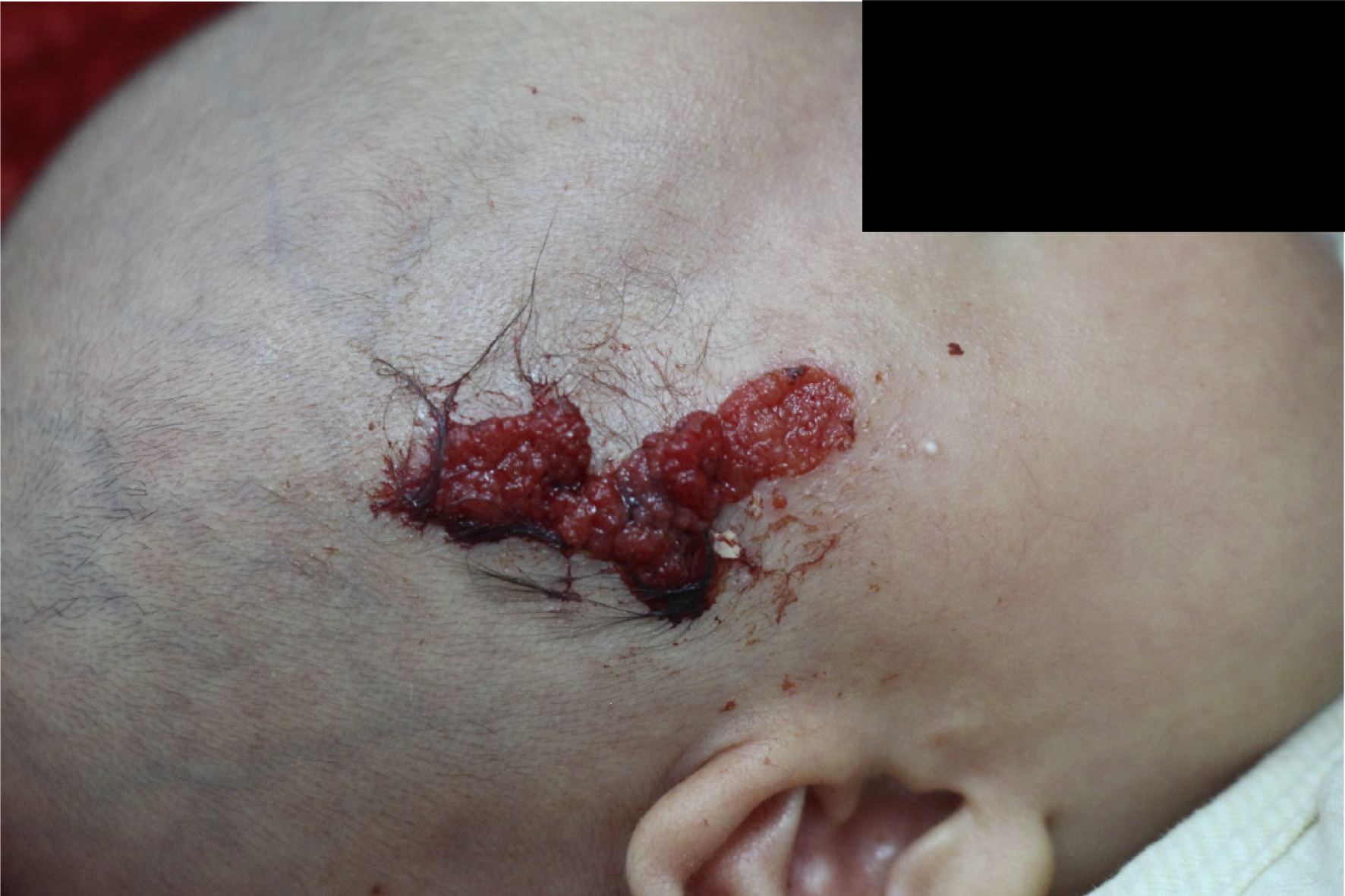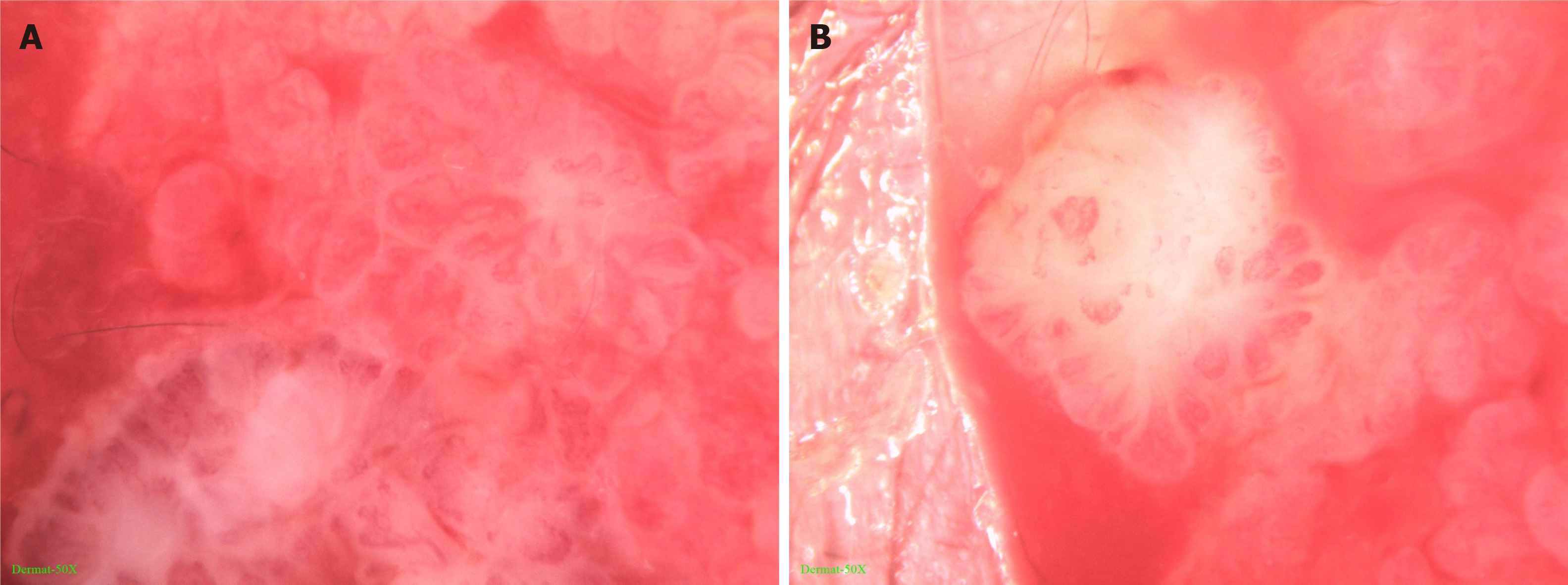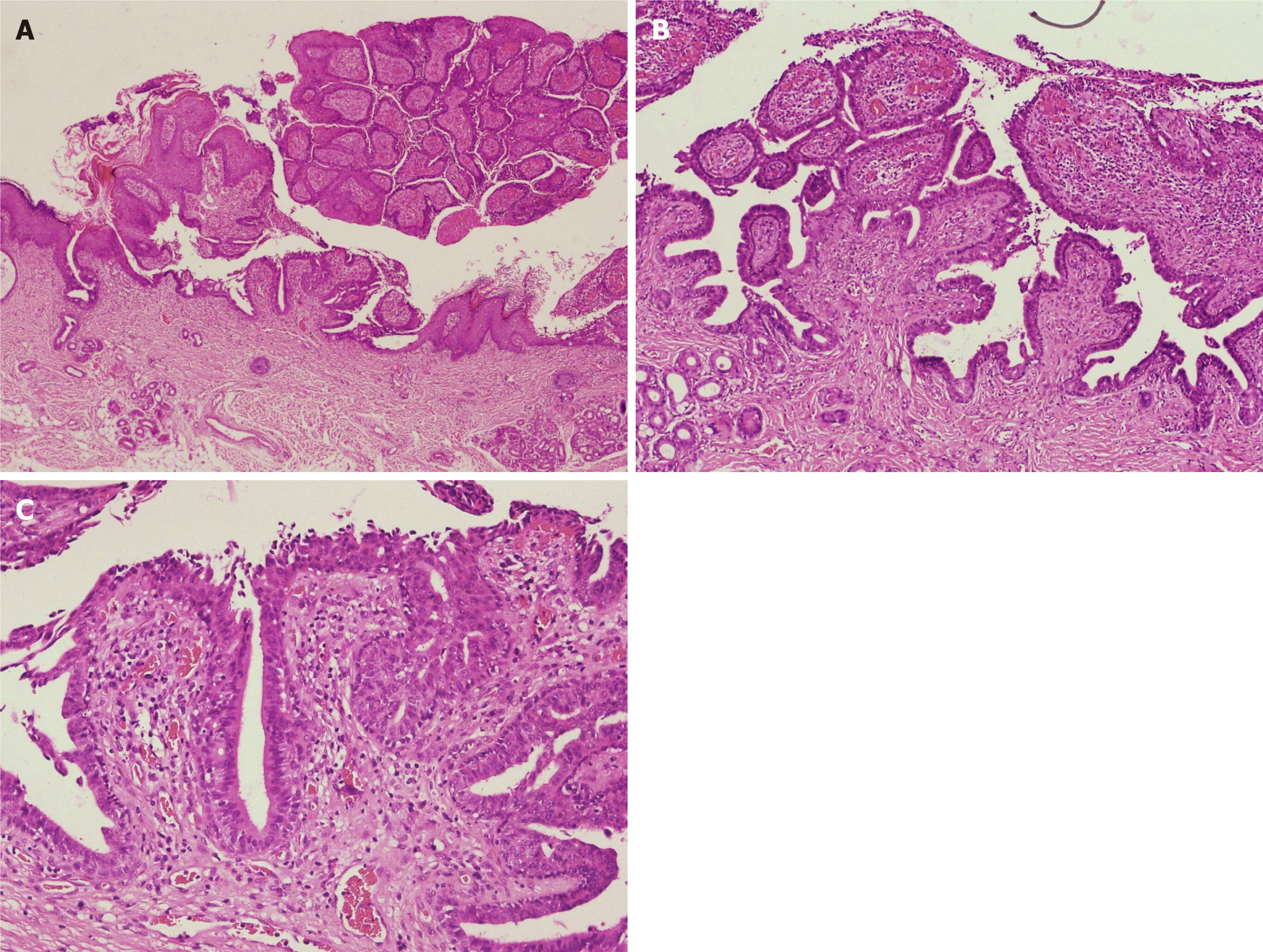Copyright
©The Author(s) 2021.
World J Clin Cases. Jun 26, 2021; 9(18): 4772-4777
Published online Jun 26, 2021. doi: 10.12998/wjcc.v9.i18.4772
Published online Jun 26, 2021. doi: 10.12998/wjcc.v9.i18.4772
Figure 1 Macroscopic features of the lesion.
The child presented a red lesion in the right frontotemporal region, which was granular and papillary (about 1.5 cm × 4 cm). A pedicle can be seen at its base. A hard and clearly delineated subcutaneous mass was felt at the base of the lesion, expanding beyond it (about 3 cm × 5 cm).
Figure 2 Dermatoscopic appearance of the lesion.
The infiltration method was used (× 50). A: The skin lesion had lobular and crumby structures. Its center was reddish or white while the edges were white or yellowish, band-like; B: There were polymorphic vascular structures and white radial streaks in the lesion, with some vascular clusters scattered.
Figure 3 Histopathological findings.
The sample from the syringocystadenoma papilliferum case was submitted to hematoxylin-eosin staining. A: Papilloma-like hyperplasia of the epidermis, with the epidermis partly sinking into the dermis to form several cystic depressions, lined with stratified squamous epithelium (× 40); B: Glandular cavity-like structures in the dermis, with some opened into the epidermis. Large amounts of lymphocytes, neutrophils, and plasma cells were infiltrated in the interstitial area, with splinter hemorrhage (× 100); C: The cavity wall and villous epidermis of the glandular cavity were composed of two layers of epithelial cells; the inner layer included columnar cells, with oval and eosinophilic nuclei and abundant cytoplasm; apocrine secretion was observed (× 200).
- Citation: Jiang HJ, Zhang Z, Zhang L, Pu YJ, Zhou N, Shu H. Neonatal syringocystadenoma papilliferum: A case report. World J Clin Cases 2021; 9(18): 4772-4777
- URL: https://www.wjgnet.com/2307-8960/full/v9/i18/4772.htm
- DOI: https://dx.doi.org/10.12998/wjcc.v9.i18.4772











